By Pete Nealen
There are a lot of optics on the market now, more than ever before — and mostly better than before. From red dots to prism scopes and low power variables to high-power long-range scopes, technology, and design innovation steadily expand the pool of options. As a result, there’s something for just about every task and budget out there. One choice to make when selecting an optic is that of FFP vs SFP: First Focal Plane vs Second Focal Plane.
So what’s the difference, and how does that affect your choice of optic?
First Focal Plane vs Second Focal Plane
The military has increasingly turned from the old, fixed-power ACOG/RCO to low power variable optics or LPVOs. The Army recently adopted the 1-6x SIG TANGO6T as the Direct View Optic, and the Marine Corps has begun to field the 1-8x Trijicon VCOG as the Squad Common Optic. Variable power optics use in the military is on the rise and have been for some time.
Most long-range scopes have been variable power for a long time, mainly within the 3-25x range. For example, the old Schmidt & Bender M8541 Scout Sniper Day Scope had a 3-12x range. However, quite a few modern long-range scopes go up to 25 or even 35x.
Higher magnifications allow greater focus and easier target identification at the range. In contrast, lower magnification allows a much wider field of view, helping with more rapid target acquisition.
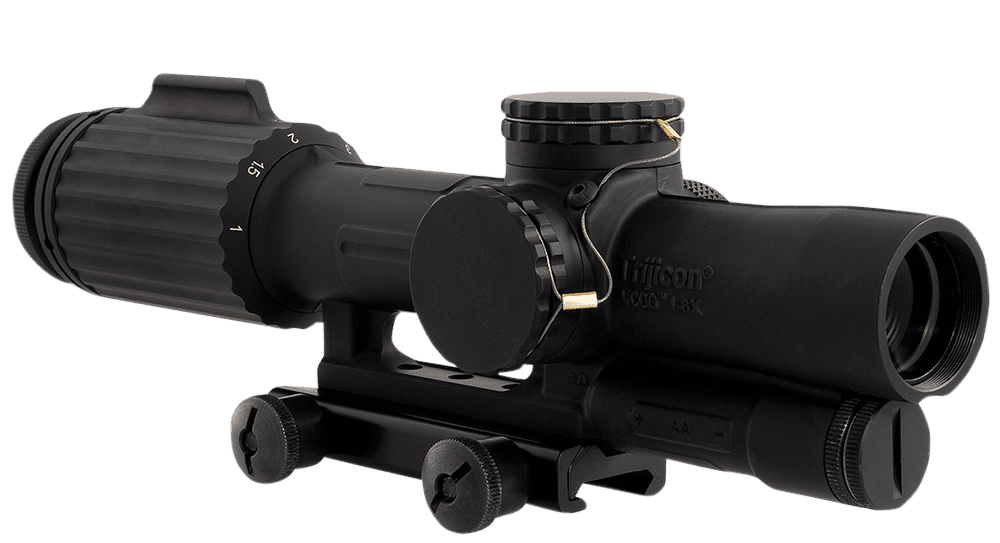
If you’re looking into optics for the first time, you’ll find a pretty wide range of options and price points. You can even find higher magnifications at pretty reasonable prices.
Some of that comes with a tradeoff, however. You will generally find the lower-priced options are second focal plane or SFP optics. In contrast, first focal plane scopes in the same magnification range are usually priced a couple of hundred dollars (or more) higher. Why is this, and what’s the difference?
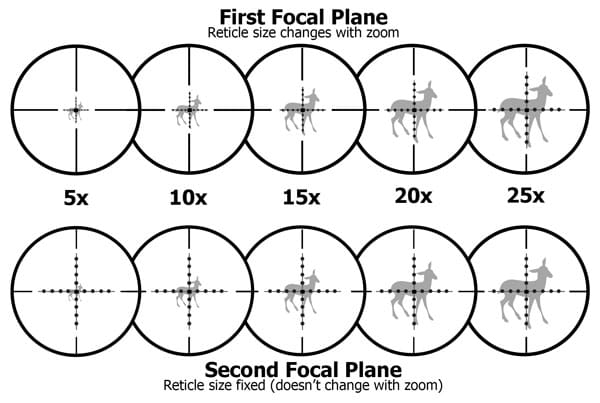
The second focal plane puts the reticle—which is etched on glass—behind the magnification lens. That means that the reticle stays the same size regardless of the magnification dialed on the scope.
There are pros and cons to this. It’s easier to produce (hence the lower price tag). It makes the reticle easier to see at any magnification since the reticle itself doesn’t change size.
However, that becomes a problem if you’re using the reticle for measurement, ranging, or hold-overs (using the reticle itself to adjust the elevation and windage for a shot instead of dialing the scope). With a second focal plane scope, the reticle is only effective (unless you’re dialing) at one magnification.
Again, this isn’t a problem if you’re dialing your scope. On a properly zero’d scope, the round should go wherever you put the crosshair, so there’s no need for holdovers. If you’re going to be ranging, you’ve probably already dialed the magnification up for greater precision, anyway. Of course, that’s presuming that you aren’t using a laser rangefinder for that task. Just remember…batteries die.
Here’s a question that the author has asked a few times: “If the SFP reticle is only good at one particular magnification, why built a variable-zoom optic at all? Why not just make it a fixed-power scope?”
Unfortunately, it appears that, outside of prism scopes, fixed power rifle optics aren’t available, or at least not readily available, these days (though someone will doubtless be able to name one to prove me wrong).
There’s a case to be made for using the variable zoom for spotting. Higher zoom results in a smaller field of view and makes it harder to pick up a target. So, with a second focal plane scope, the shooter can dial the magnification down, find his target, dial it up, range it, dial his elevation and windage, and engage.
Some long-range shooters have come to prefer second focal plane scopes because the reticle size doesn’t change, especially if they’re not worried about ranging. If they’re dialing their holds — elevation and windage — then the mil or minute of angle marks in the reticle matter less.
This does, of course, depend on the reticle.
As you may have gathered, first focal plane scopes place the reticle in front of the magnification lens, resulting in a reticle that shrinks or grows as the magnification is adjusted. That means the reticle’s tic marks or gradations always cover the same minutes of angle or milliradians, regardless of the magnification level. The measurements of the reticle are accurate at any magnification.
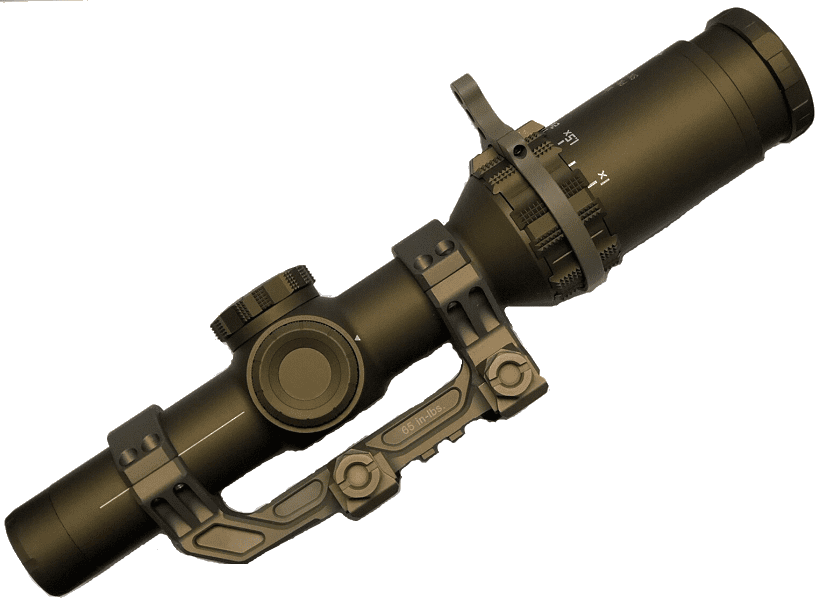
That can be really useful for rapid ranging or engagement at distances without dialing the magnification up or setting the turrets. While that might be of limited use in a more simplistic reticle, with a mil grid like the HorusVision Tremor or the Schmidt & Bender GR²ID reticles, there is little need to manipulate the turrets once the optic is zeroed.
The shooter can accomplish all adjustments using holds. But those holds would be dependent on magnification in a second focal plane scope. In contrast, the shooter can range, engage, and adjust at any magnification with a first focal plane. It makes engagement far quicker. That might be much more of a tactical consideration than for, say, competition or hunting. But it is still a valid consideration.
In many ways, this choice does depend on your budget and requirements. Many with a sniper background (including the author) still question the point of a second focal plane variable optic. Others argue that the reticle on a first focal plane optic gets too small at lower magnifications and too large at higher, obscuring the target.
In fact, I tested this very thing on a telephone pole at 2163 meters, using a HorusVision Falcon at 20x. At that extreme distance, the HorusVision reticle, at least, still did not obscure the entire pole, which is a target about roughly 14 inches wide.
Dialing holds can be far more precise than holding, especially if your reticle isn’t as “busy” as a Horus or a GR²ID, or one of the other “Christmas tree” reticles out there.
Many second focal plane scopes have considerably simpler reticles with a couple of MRAD (milliradian) or MOA (minute of angle) marks on the branches of the crosshair.
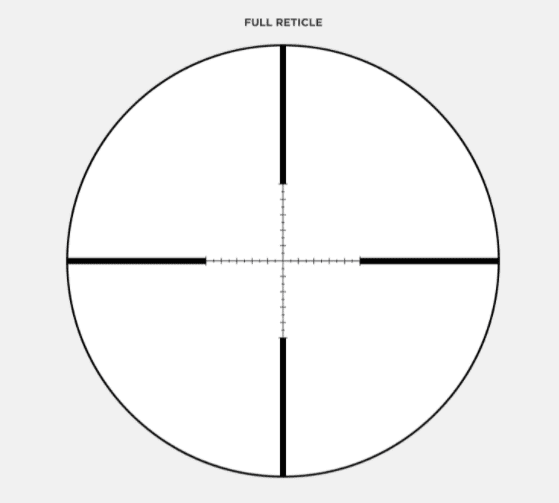
Even with the older mil-dot reticles like the M8541s, holding often meant a certain degree of guessing, as the crosshair would be off in space somewhere outside the target. In that case, the shooter would be better served by dialing rather than holding, which diminishes some of the weaknesses of the second focal plane scope.
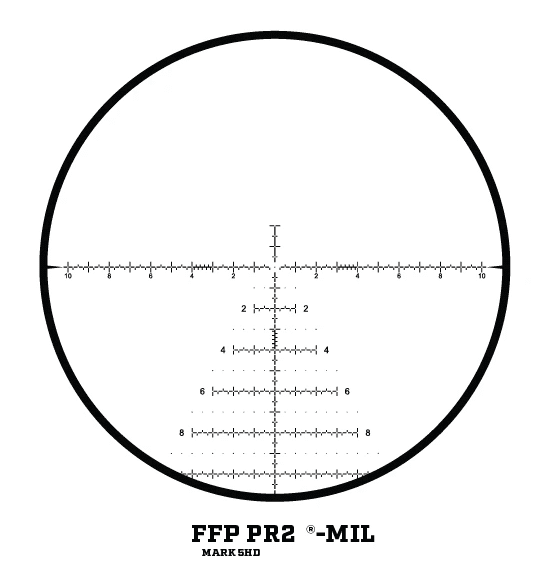
So the choice boils down to a couple of factors. First, what are you looking to do with your optic? Rapid engagement at various ranges would probably be better served with a first focal plane scope with a grid reticle of some sort. That could apply either to tactical situations or stalk hunting.
On the other hand, if the shooter plans on stationary shooting, be it bench shooting for load testing, stand hunting, or even slower-paced long-range engagements, then a second focal plane optic might be acceptable.
Finally, there’s the matter of price. Good glass isn’t cheap and cheap glass is rarely good. A first focal plane reticle will drive the price up at least a hundred bucks or so, depending on the brand and model scope you’re looking at. On the other hand, if budget is an issue, then the relative weaknesses of a second focal plane can be worked around.
After all, riflescopes are tools. They aren’t going to do the work for you, but they can make it easier. If you get the results you’re looking for with the tool you can afford, nobody can tell you that you did it wrong.
A good shooter with a budget, second focal plane scope, who can regularly ring the steel at a distance is better off than the sloppy shooter who can’t get on paper with his much more expensive first focal plane optic.
Pete Nealen is a former Reconnaissance Marine, a veteran of Iraq* and Afghanistan**, and more than a bit of a Renaissance Man. In addition to a number of online articles for various publications, Nealen has written more than two dozen novels and a couple of non-fiction works. When he’s not penning action books or musing about the Triarii he can be found…actually, that’s really all he does. Plus the occasional freelance article of course.
*1st Platoon, Bravo Co., 1 Recon Bn. **4th Platoon, Force Reconnaissance Company, I MEF.


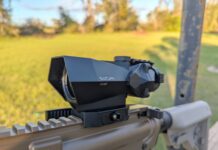


Unmentioned by the author is the etched reticle will still work even if the battery dies. I gotta a 1-6×24 LPVO 2nd focal plane. Happy so far but need to fine tune. Main concern is shooting out to 250-300yards. I also have a red dot/3xagnifier. And a 3-9×40 scope-and a light. I don’t compete,run n gun or hunt. SHTF & the coming summer baby murder riots are my main concern. Ain’t life fun?!?
I think we’re blowing the baby riots a little out of proportion.
Besides what a convenient time to have that distraction. Gas is up, bare shelves, this that and the other, but I’m grabbing my cardboard sign and go out and protest abortion.
Aide to theBiden: ” Mr. President it smells like you’ve shit your pants, did you ?”
theBiden: No.
Aide: ” Are you sure it certainly smells like you have, let’s just check to be sure. Well yes you have.”
theBiden: Oh I thought you meant today.
President Joseph Robinett Biden, a man any country would be proud to have as their leader.
Cooper was an advocate of the etched reticle. Said it was more rugged.
Second focus works okay for me, 500yards is about as far as I’ll ever shoot.
Has anyone heard this one before. ” I dont like a hi power scope, they make me shake.”
Well, any movement *is* magnified when looking through glass at high power.
Possum is correct. The more magnification the more the percieved tremor. Doesn’t really influence accuracy (at least at reasonable distances, let’s be real, most of us are not snipers.) I like shooting at the lowest magnification for the situation. 6X is good for long shots. Lower power in the field always worked better for me. Just saying.
That’s why I say we have no hope for change except by force. This country has been taken over by corrupt politicians for over 45 years. Everyone one that in government from the past 45 years has baggage. They all need to be put on trial and investigated.i do home work ….. 𝐰𝐨𝐫𝐤𝐬𝐜𝐥𝐢𝐜𝐤.𝐜𝐨𝐦
G f’n d it… now I want a new Trijicon.
Also, reticle designers: please somehow come up with a way to add even more crap into the scope. It really helps! Perhaps a secondary crosshair?
This official application offers users to get access to Aditi Mistry’s personal and professional life. It contains exclusive pictures and videos of Aditi. The application has made sure to provide the user to interact with Aditi 24/7. You can request a personal video call and try your luck of getting a chance to video chat with Aditi. Aditi comes live on her application and interacts with her fans. Direct message her and stay connected all the time.
I want to always read your blogs. I love them Are you also searching for Nursing admission essay help? we are the best solution for you. We are best solution for you.
THANK FOR NICE INFORMATION, VISIT OUR WEBSITE : https://telkomuniversity.ac.id/
check out the best way to load kayak on J rack by yourself
Thanks for such a pleasant post. This post is loaded with lots of useful information. Keep it up. If you are looking for the best information and suggestions related to riot shield bulletproof then visit us.
Need cover art for your next release? Learn all the correct album cover art sizes, dimensions and format required for digital stores like Spotify and Apple.
It’s also got a number of other cool features, like filters, lenses, and geofilters, that can make your photos and videos more fun and engaging. And since Snapchat is all about temporary content, you don’t have to worry about your old snaps taking up space on your phone.
Can I use apple sauce instead of oil/butter? This personal cake sounds delicious
Check Latest Uk49s Teatime Which announced Recently – check 49s Lunchtime Results 2022 – Draws for South Africa
In the vast landscape of technology, there exists a digital wonderland where innovation and creativity converge to shape the future. This captivating realm is none other than Texhup. In this blog, we embark on an enthralling journey to explore the origins, revolutionary products, and the captivating charm of Texhup.
A platform for tech enthusiasts to share insights, tutorials, and reviews on trending apps and gadgets, fostering a community of passionate learners. SNAPETUBEGEEKS
Great Article. Thanks for sharing it with us. Jagger Copenhagen
Comments are closed.